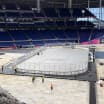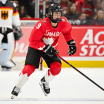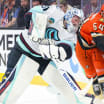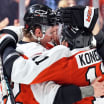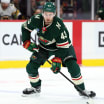"It's almost hard to believe we've all been at this for a year, and we're still not done," NHL Commissioner Gary Bettman said Thursday. "Yes, there's a light at the end of the tunnel, but also this isn't the time to let our guard down or reduce our vigilance."
This is a time to take stock of what happened, what the NHL accomplished and what is to come.
The coronavirus was a minor item on the agenda when NHL general managers held their annual meeting March 2-4, 2020. The NHL had barred League employees from overseas travel but left teams to make their own decisions. Some European scouting had been disrupted.
"None of us really knew what this was all about, so we were kind of like everybody else, like, 'Well, this is probably going to be like a flu or a little bit worse, and it'll go away,'" Columbus Blue Jackets GM Jarmo Kekalainen said. "And sure enough, about a week later, the League shut down."
Commissioner Bettman decided to pause the 2019-20 season March 11, 2020, after an NBA player tested positive for COVID-19. He announced it the next day after speaking to the NHL Board of Governors.
"I don't think any of us really knew how serious it was at the time," Chicago Blackhawks forward Patrick Kane said. "I thought maybe we'd have a couple of days or a week off and get right back at it, but obviously that wasn't the case. It was amazing how everything just turned on a dime and the world pretty much stopped."
The NHL hadn't faced anything like this since 1919, when the Stanley Cup championship series could not be completed due to the Spanish flu. But the League was in its second season then. It had three teams, each in eastern Canada. The Montreal Canadiens were playing for the Cup against the Seattle Metropolitans of the Pacific Coast Hockey Association.
Now the NHL had 31 teams across North America, with a 32nd on the way in Seattle, of all places. It was a business generating more than $4 billion in annual revenue, at least when it had fans in attendance.
There was no playbook, starting with the virus itself. It was a novel coronavirus. By definition, it was new.
"What everybody has faced -- not just in sport, but medicine in general through this pandemic -- is that we had to learn on the fly and we had to figure things out based on the best information we had, which was lacking a lot of the time," NHL chief medical officer Willem Meeuwisse said. "And so, we had to do a lot of things through discussion and collaboration and gut feel."



